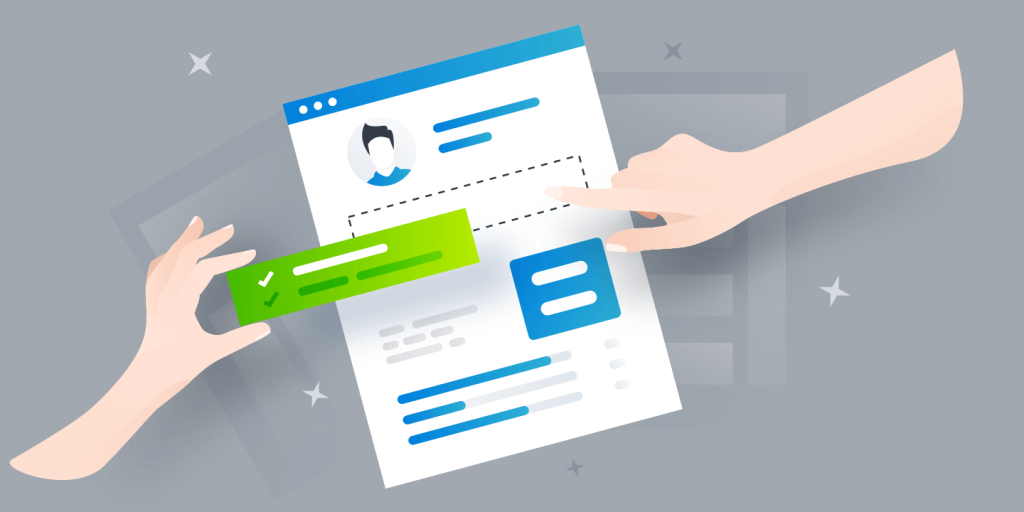This success will not only benefit each employee’s career track while they’re with the company but will also return measurable benefits to the business.
Working remotely makes it easier to access large pools of talent, but onboarding remote employees is a unique challenge. And with the new reality that we’re all living in right now, more new employees than ever are adapting to a world that’s largely virtual – and hiring hasn’t stopped.
This makes it more critical than ever to get their onboarding right. A 2017 Gallup report found that 88% of employees felt their onboarding experience was poor. Without a physical office presence, there are a few important tweaks to your onboarding process that are critical to ensuring a remote employee’s success.
If your organization is still adapting to a virtual working environment, tweaking your onboarding process might seem like a daunting task. Because of that, we built you a one-month checklist to help you get every new remote employee comfortable and up to speed.
 Before The Start Date: Get Everything Ready For Them to Go
Before The Start Date: Get Everything Ready For Them to Go
Think about the last time you started a new job. When you arrived, you were probably greeted by someone in HR or office management and shown to your desk, where your new computer was waiting for you. From there, you spent the majority of the day signing HR papers and getting the lay of the land around the office. While you can’t do these things face-to-face, you can (and should) make sure that all of these things are either scheduled or taken care of by the time remote employees log on for work for the first time.
The good news is that doing much of this virtually is very easy, especially when it comes to paperwork. When it comes to paperwork, send it over via your choice of tools such as DocuSign or HelloSign. Even if they don’t complete it before they start, this will prevent them from feeling overwhelmed by it on Day 1. Doing this prior to their start date also gives the new hire time to ask questions along the way, especially since you won’t have the luxury of sitting next to them as they complete the forms.
The technology component of this equation is just as easy. Mail carriers have made it easier than ever to ship a laptop, so there’s no reason not to do so before a new hire begins. But beyond this, don’t stop at shipping physical technology. Work with your IT department to ensure that all of their email addresses, product logins, and chat accounts have been created by the time the new hire receives their computer.
Below, you’ll find a quick checklist of accounts that the new employee should have before the start date:
- Work email
- Slack, or any internal chat application your company uses
- Access to the help desk
- Analytics dashboards and internal wiki
- Payroll, 401K, and healthcare portal logins
There are probably many more accounts to provide access to, but use this checklist as your starting point to create your OWN checklist that you can re-use for each new hire. And no matter how long your list of accounts and products is, make sure your new hires aren’t searching for access on Day 1.
 During The First Week: Schedule Face-to-Face Meetings With Managers
During The First Week: Schedule Face-to-Face Meetings With Managers
Research by Digitate found that 40% of employees felt it took too long to get an answer to a question during their onboarding. If that’s difficult for onsite employees, imagine how much more of a challenge it is for anyone who’s working remotely. That’s why it’s important to make sure that you schedule “face-to-face” meetings with managers and other leaders across your company during the first week.
Here’s a brief list of people we recommend setting meetings with:
- The employee’s direct manager
- The employee’s team leads (if applicable)
- The employee’s colleagues
- Any other managers or employees across the company he or she will work closely with
That’s a very basic list of meetings that should be set. But beyond those initial calls with their colleagues and manager, plan ahead for other onboarding meetings that typically occur in an office setting.
We suggest creating a Trello board to keep track of their onboarding tasks, which should include the list of items below:
- Review the employee handbook and any additional HR policies
- Demo the product and attend related webinars to get up to speed
- One-on-one peer support sessions to understand your ticketing system
- Review their goals for the first 30 days, 60 days, and 90 days
- Attend training with IT department to understand the company’s tools and security procedures
Much of this is not very different from what you’d expect from an on-site onboarding experience. The only difference is that the majority of this will happen virtually. While you won’t meet face-to-face in the same room, it’s important to understand that the onboarding experience for a remote employee should be that different than it is for anyone else.
 After One Month: Have a One-on-One Conversation With the Employee
After One Month: Have a One-on-One Conversation With the Employee
Is your job done once a new hire has their technology set up, their HR paperwork signed, and has met with all their future colleagues? Not even close. Studies suggest this is just the beginning. BambooHR’s 2017 employee onboarding survey found that 31% of workers have quit a previous job after six months. If you leave a new hire to their own devices after taking care of initial logistics matters, you could end up losing that person to a competitor sooner than not.
Retention is always a challenge, and your efforts to keep top performers begin almost immediately. Give yourself a head start by scheduling a call with each new hire after his or her first month with the company. This call should be designed so that the employee feels comfortable sharing their initial impressions of the team and the company.
Here are a few things you should do to ensure that is possible in a virtual setting:
- This should also be a virtual, face-to-face call
- Make it clear that the employee should be as honest and transparent as possible, and will face no repercussions for doing so
- Ask for feedback about the onboarding experience
The benefits of doing this are twofold. First, it shows the virtual employee that you are serious about making them as comfortable as possible in their new role. Additionally, this gives you an opportunity to improve upon your current onboarding experience. Perhaps you’ll find out that you’re not getting important materials to employees quickly enough, or that the new employee feels isolated from the rest of their team.
Both of these are common complaints about working remotely, but when you identify them quickly, you’ll be able to remedy them even faster.
 Remote Onboarding Checklist
Remote Onboarding Checklist
Onboarding is an important process for any new employee, but especially for one who will not be in a physical office location. And there are tangible benefits for taking remote onboarding seriously. According to SHRM, employees are 58% more likely to succeed if they go through structured onboarding.
To review, let’s go through a quick checklist of items that your remote employees should go through as part of their remote onboarding experience.
Checklist
- Remove any barriers by setting up necessary accounts, technology requirements, and HR paperwork prior to the employee’s first day
- Schedule all meetings with colleagues and any additional onboarding sessions by the end of the employee’s first week
- Ensure that you meet with the employee to review onboarding at the end of the first month
Over time, this success will not only benefit each employee’s career track while they’re with the company but will also return measurable benefits to the business.





